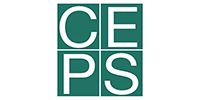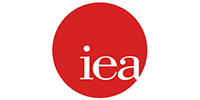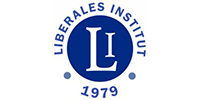Sorry, on Inflation We Were Wrong
Sorry, on Inflation We Were Wrong | Over the last two months, top officials of the two most important central banks in the world, the Federal Reserve and the European Central Bank, have publicly admitted that they have made big mistakes in considering the 2021-2022 inflationary surge afflicting the global economy only as a mere “temporary” phenomenon.
The first to admit the error was the European Central Bank. In the Economic Bulletin, Issue 3/2022 (April 2022), Frankfurt’s economists issued a mea culpa for persistently underestimating inflation, blaming increasingly large forecast errors on surging energy prices, supply chain bottlenecks and a stronger-than-expected demand rebound from the pandemic. Financial Times wrote that “the ECB made its worst ever inflation forecast in December 2021 when it predicted eurozone consumer price growth would fall to 4.1 per cent in the first quarter of this year. Instead, it rose to 6.1 per cent, prompting the ECB to accelerate its plans for stopping net bond purchases and opening the door to a potential interest rate rise as early as July”.
The second to apologize was Janet Yellen, a former chair of the Federal Reserve and current United States secretary of the Treasury. “I think I was wrong then about the path that inflation would take,” Yellen admitted in a CNN interview on the first of June 2022. “There have been unanticipated and large shocks to the economy that have boosted energy and food prices and supply bottlenecks that have affected our economy badly that I didn’t — at the time — didn’t fully understand, but we recognize that now.”
The consequences of these errors may weigh like a boulder on the future reputation of the ECB and the FED. But they were not due only to bad luck. Certainly, an unprecedented situation such as the outbreak of a world-scale pandemic made the predictive capacity of major international institutes more limited than it already is under normal circumstances. And to make this capacity more restricted, we must bear in mind that post-Covid inflation began to emerge seriously from early 2021, at a time when the world, in the middle of an unprecedented vaccination campaign, could not say whether and when the pandemic would be over.

Nowadays, we are surely in a better position to analyse the roots of inflation and draw some conclusions. First, there is a short-term cause, reasonably forecastable: the strong aggregate demand rebound observed towards the end of the pandemic. Then, there are two short-term causes not easily predictable: the supply shortages occurred in global supply chains and the Russian invasion of Ukraine which has produced an exponential increase in energy prices. Finally, there is a long-term cause, less cited but no less important than the others: the decision by governments, especially European ones, to pour billions of dollars in the so-called green and digital transitions, with the aim of reducing dependence on traditional and polluting energy sources and increasing the weight of the digitalization in the economy. Was this last cause predictable? According to a great number of experts, yes it was very easy to foresee that both the transitions would have been strongly inflationary. In the green transition case, the faster the transition towards renewables occurs, the higher the expected inflation in the medium term.
Even the European Central Bank seemed to have realized about the danger, as it published a position paper for tackling what it called “new age of energy inflation”, identifying several root causes, including “fossilflation” (the price pressure created by dependency on fossil fuels) and “greenflation”, in which prices of inputs for greener infrastructures and production processes, such as metals and minerals, rise due to high demand. Unfortunately, analyses were not followed by actions for containing the inflationary phenomenon.
Why has this happened? The mistake made not only by the European Central Bank but also by the Fed on the nature of inflation did not depend on a physiological difficulty (impossibility, in a Hayekian view) in elaborating complex macroeconomic forecasts, but it is rather a child of the credence in the “secular stagnation” which has been indoctrinated in public officials.
The secular stagnation is a theory first put forward during the Great Depression, and revived in the 2010s by economist Lawrence Summers, who served as an economic advisor in both the Clinton and Obama administrations. Professor Olivier Blanchard, a former IMF director is also a notable follower of the secular stagnation. According to this theory, the lack of investing observed over the last decades is due to an increased tendency toward saving by economic agents. The deficiency of a strong intervention by governments through high-spending fiscal policy leads economy to stagnation, weak economic growth and near zero inflation environment.
Put differently, the secular absence of growth and inflation can only be eliminated by policymakers through massive public spending programs. Better if accompanied by an ultra-expansionary monetary policy, which injects a huge mass of money into the financial system. This policy mix would lead the economy to Keynes’ “full employment”, with physiological unemployment and inflation rates.
Central banks (over the past decade) and governments (especially during the pandemic) have followed the advice of the promoters of secular stagnation to the letter. The results are what we all observe today. The rate of inflation has exploded globally, reaching the highest levels of the last forty years in most of Western countries. An outcome completely opposite to what the theorists of secular stagnation expected.
The Arcadian age longed for by theorists of secular stagnation, one in which governments would be able to increase growth while keeping inflation under control thanks to a calibrated mix of interventionist and half-planned Keynesian policies has not come true. Rather, stagflation is the situation the world faces.
No one knows today when this inflation will end. Perhaps another Paul Volcker, the chairman of the Federal Reserve who put an end to the Great Inflation of the 1970s, will be needed to tackle the price increase. Volcker was the man who, challenging US politicians and influential lobbyists, as well as the mainstream Keynesian school that ruled at the time, made “bad cop” decisions, ushering in the “whatever it takes” policy on interest rates: any hike needed until inflation is back under control. It worked. It took two recessions, a double-digit unemployment rate, but eventually inflation got back into the ranks.
Volcker’s lesson is more valid today than ever. First, it helps us to understand that easy money, the policies of indiscriminate subsidies granted by governments, the idea that goods and services are not scarce and therefore should not have a price system that regulates their exchange are crazy thoughts. By the simple law of supply and demand, the scarcer a good is, the higher its price. It works now as it worked centuries ago. Second, it helps us to recognize that any energy, digital, technological revolution or “transition” that is not the result of a spontaneous market process but is directly imposed by public power will inflate the goods and services necessary to carry it out. Thus, a government that forces an economic revolution on the market must be willing to pay the consequences in terms of inflation.
But since that government will not be happy with an independent central bank that adopts restrictive monetary policies to fight that inflation, it will criticize the central bank and try to replace the inconvenient bankers with more complacent ones, willing to monetize the entire process through expansionary monetary policies, thus aggravating the situation. This was precisely the attempt by the proponents of the theory of secular stagnation. An attempt which luckily failed, albeit at a very high cost for taxpayers.
Dr. Emanuele Canegrati is a PhD at Catholic University of Milan, economist at Department of Treasury, Head Market Analyst at BlackPearlFX and Fellow of the Liechtenstein Academy Foundation.































